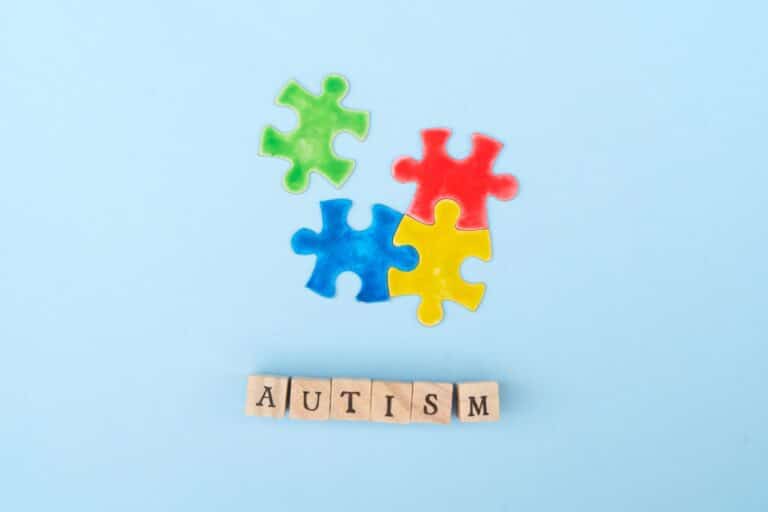No matter what type of addiction you or a loved one is struggling with, there’s always far more to it than just the substance that’s being abused. There’s also no denying that addiction has a bad and often one-sided stigma.
But the reality is that addiction, specifically to more dangerous drugs such as meth, is a multifaceted disease. A deeper understanding is necessary if addiction is well advanced and results in poor physical health, meth sores, and poverty.
In this article, we look at meth addiction, how it can impact your physical health, and the treatment options available.
What Exactly Is Meth?
More formally known as methamphetamine, this type of schedule II drug is a highly potent stimulant that also happens to be highly addictive.
So, how does a stimulant, such as meth make you feel? This type of drug offers the user a huge boost of energy, intense levels of concentration, and feelings of euphoria. In short, meth speeds up many of the neurological functions inside the brain and the body.
The result is an over-stimulated internal system that increases your blood pressure, speeds up your heart rate, and more. Meth is also nicknamed ”speed” — which is rather apt for many of the above reasons.
You can consume meth in several different ways. You can either snort it in powder form, smoke it in crystal form (crystal meth, ”blue”, ”ice”), dissolve it in liquid, inject it, or transform it into an oral pill.
How Does Addiction Happen?
As with any addictive substance, the more you use it, the more your body builds up a tolerance towards it. Ultimately, this drives up your usage of the drug in order to reach your next high. A methamphetamine addiction works in the same way. The stimulant’s effects are also what becomes addictive.
Many people become addicted to the rush, the high, and the euphoric feeling that meth delivers. Not only this, but meth (as with any drug) affects neural pathways in the brain, which results in dependency on the drug, i.e., addiction.
Meth Sores: What Are They?
So, you may have heard about meth sores or even seen pictures of them in an educational class on drugs before. Either way, meth sores are a common part of meth addiction.
They are open wounds that form almost anywhere on the body, but most commonly in the mouth area, on the chest, hands, and arms. These sores are one of the most noticeable signs of regular meth use and meth addiction.
If you use meth once, twice, or occasionally, you’re not likely to develop meth sores. However, meth sores are a result of consistent meth use.
What Do They Look Like?
They are often mistaken for acne, especially because they appear on the face of most meth users. But meth sores typically appear as open, red, and inflamed flesh wounds that may also have a scabby appearance as they heal.
They may look like small bites to start with, but once they become infected or irritated from repeated itching or scratching, they can become large open sores.
Meth sores often result from things like burns from meth paraphernalia, a weakened immune system, continuous skin picking and irritation, a lack of personal hygiene, and infection.
Meth Face and Mouth Sores
Many people addicted to meth may choose to dissolve the drug in water in order to inject it. This is especially common with advanced meth addicts. This means that as meth becomes water-soluble, it escapes the body through our pores as sweat.
The pores on the face tend to sweat and excrete oil the most, hence developing meth sores on the face and around the mouth. This meth-laden sweat irritates the skin, which results in meth sores.
Skin picking is also common among many meth addicts, leading to open wounds on the face that become infected. This leads to large, open wounds that can take weeks to heal.
Mouth sores are also common among crystal meth users who smoke the drug through a pipe. As the pipe heats up, it can burn the lips and the skin around the mouth, resulting in blisters that develop into open wounds.
Skin Sores
The more you use meth, the more it restricts blood flow through the blood vessels — this is just another internal side-effect of the drug. This results in the skin becoming very dry and scaly due to a lack of healthy blood flow and oxygen.
These dry patches of skin can become itchy, and with enough scratching and picking, will develop into open wound meth sores. They are most common on the hands, arms, chest area, and legs.
Meth Sores Caused By Meth Mites
As mentioned, meth is a strong stimulant that can sometimes result in hallucinations. For long-time users of meth, they may experience hallucinations that bugs, also known as ”meth mites”, live under their skin.
There is actually a formal term for this type of hallucination known as formication. It involves two senses — both sight and touch, which can make the hallucination seem very real.
The hallucination causes a crawling sensation of the skin. Or a meth user might think that they can see bugs crawling beneath their skin. The result is continuous scratching and itching, leading to irritated skin and large, open sores.
What Is the Treatment for Meth Sores and Addiction?
Depending on how severe meth sores are, they will need medical attention — especially if they’re infected. Most of the time, this is the case as those under the influence of addiction tend to neglect personal hygiene.
Picking and scratching at the skin due to continued meth use can also make the sores worse and lead to infection. Short-term treatment for meth sores may include a round of antibiotics to clear up the infection. At the same time, some sores may need to be drained and manually treated with thorough wound care either at a doctor’s office or at the hospital.
However, this is only a short-term solution. To clear up meth sores completely, the root of the problem must be addressed. And that is the meth addiction.
As mentioned, those who experience meth sores regularly most likely have a long-term meth addiction. The solution to overcoming this is a medical detox and inpatient rehabilitation program.
While this road is not an easy one to walk, those with a long-term addiction need all the support they can get. This is what an inpatient rehab center with experience in meth addiction and recovery can offer.
Find the Support You Need With Southern California Sunrise
If you or a loved one is struggling with meth sores due to long-term meth addiction, we are here to offer the comprehensive support you need to re-write your story. At Southern California Sunrise, we specialize in the treatment of meth addiction at our Mission Viejo inpatient facility. Learn more about how we can help you get your life and health back on track today.






